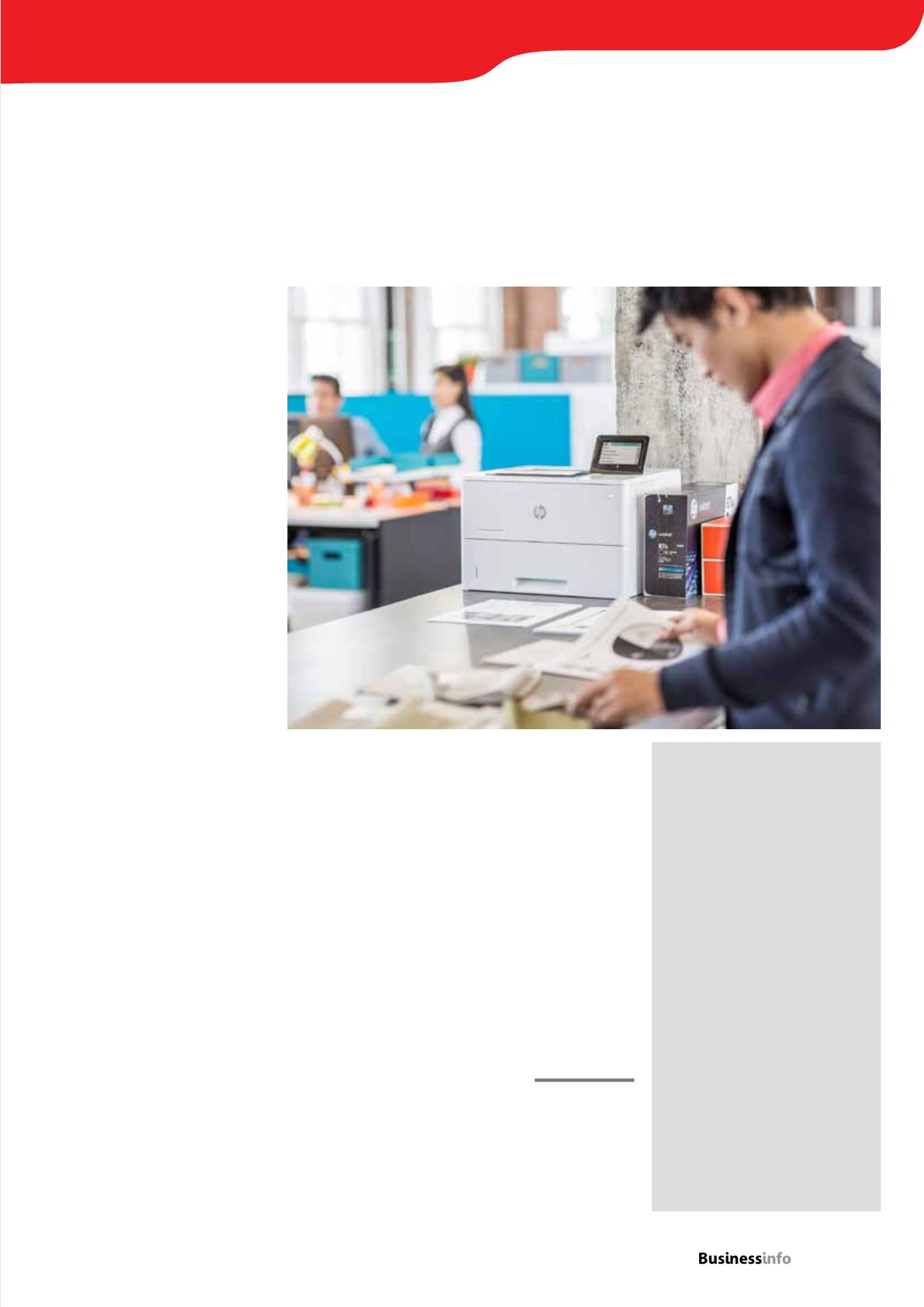
Printers
Traditionally, printers and copiers
have been seen as a source of
frustration and time-wasting, from
paper jams to empty paper trays
and out of toner messages. Is this
reputation justified or are today’s
devices actually work facilitators and
aids to productivity? Rather than
dissing the office printer should we in
fact treasure it?
Point one in the defence of modern
printers and MFPs is their much
greater reliability. In the case of Ricoh
printers, there has been a quantifiable
improvement in the last three years
alone.
Ricoh UK product manager Beata
Ulman said: “Between 2012 and 2014,
Ricoh knocked 15% off the total
number of warranty calls received.When
you take into account the increase in
sales over that period, the proportion of
calls per machines sold went down from
1% in 2012 to 0.5% in 2014. This year,
we expect the proportion of warranty
calls vs devices sold to fall to 0.3%.”
Moreover, these figures relate to
all warranty calls – not just ‘dead on
arrivals’, but also minor problems,
such as a faulty bypass tray, as well as
instances where the user is at fault, for
example when they have difficulties
loading a driver.
Fewer moving parts
Apart from the obvious fact that
customers and engineers continually
provide feedback that product
development teams can – and do –
draw on to improve future iterations of
a product, what are some of the reasons
for this improvement in reliability?
A factor cited by a number of printer
specialists interviewed by
Business Info
is the use of fewer moving parts in
product designs.
Xerox head of office product
marketing Alan Clark said: “Continuous
technological advancements in materials
and design mean digital MFPs have
fewer moving parts than those created
by older technologies e.g. devices that
have a Document Feeder with a Dual
Scanner, which scans both sides of a
document at the same time, increasing
both speed and reliability. A Document
Feeder with a single scanner needs the
document to be scanned, turned over
and scanned again, making it inherently
more prone to jams or mis-feeds.”
It is probably no accident that two
of the most successful product areas
in recent years have been compact
LED printers and business inkjets, both
celebrated for having fewer moving parts
than traditional laser machines.
Andy Johnson, head of product
management at Brother UK, said:
“Whereas many years ago we might
have had 25 different cogs in a machine,
I bet nowadays there are only 2 or 3.
The way machines have been designed
is to make them more compact. The less
moving parts there are, the more reliable
they are.”
This, says Epson UK reseller product
manager Mark Allen, is one of the
key selling points of Epson’s range of
business inkjet printers – for dealers as
well as end users. “We’ve got no imaging
unit; no developer unit; no drums; it’s
purely and simply a maintenance kit and
a printhead, so there aren’t really a lot
of components that require replacing,”
he said.
How developments in printers and MFPs have transformed our relationship
with office print devices
From zero to hero
A common
factor cited
by a number
of print
specialists
is the use of
fewer moving
parts
magazine
17
01732 759725
Continued...
Low melt toner
The introduction of low melt toner
has had a big impact on energy
efficiency, running costs, product
design and productivity.
HP Laserjet 200/400/500 series
devices are a case in point. They all
use HP’s new ColorSphere 3 and
Precision Black toner, which, thanks
to its soft core, melts at much
lower temperatures than previous
formulations.
The ability to fuse the toner to
the page at a lower temperature has
implications across the board: energy
consumption is up to 66% lower;
the first page out time is 46% faster;
printing from sleep is 61% faster;
and two-sided printing is at the rated
speed.
Because less power is needed, HP
has been able to shrink the power
supply and fuser unit, which has
enabled it to reduce the printer size
by as much as 40%, whilst increasing
cartridge yield by 33%.


